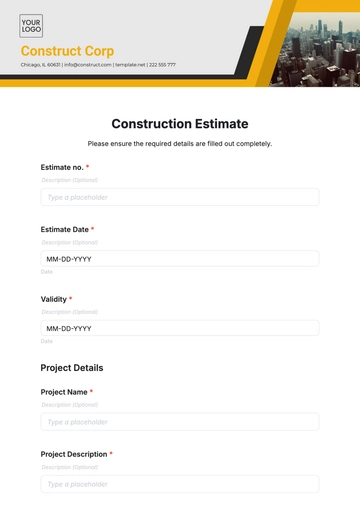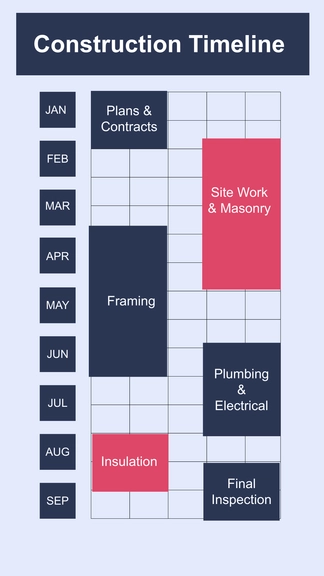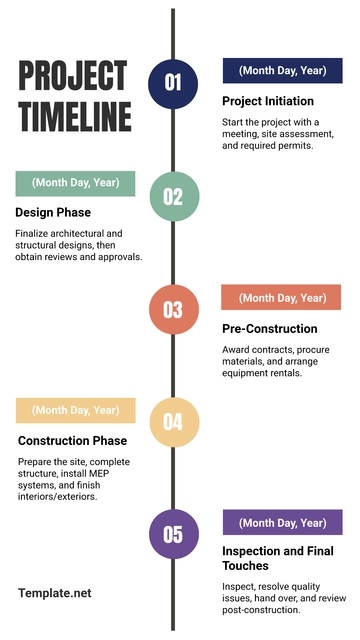Free Excavation Requirements

Prepared By: [YOUR NAME]
Date: [DATE]
I. Introduction
This document offers an in-depth summary of the essential specifications and guidelines for excavation activities, thoroughly covering safety standards to protect workers and the public, environmental measures to minimize ecological impact, and a comprehensive list of technical requirements to ensure compliance with best practices and regulatory standards.
II. Scope of Work
The scope of work includes all tasks related to excavation, earth-moving, and site preparation. This encompasses digging trenches, foundations, and any other earthwork activities required to prepare the site for construction or other uses.
Task | Description |
|---|---|
Trenching |
|
Grading |
|
Backfilling |
|
III. Safety Requirements
Ensuring the safety of workers and equipment is paramount. Guidelines for safety include, but are not limited to, the following measures:
Worker Protection: To enhance preparedness and minimize risks, it's essential to use personal protective equipment such as helmets, gloves, and safety boots, along with thorough training on machinery operation and emergency procedures.
Equipment Safety: Regular maintenance and inspection of excavation equipment are crucial for top condition, and strict safety guidelines must be followed. Only trained and authorized personnel should access the site and operate the equipment.
IV. Environmental Considerations
Measures to mitigate environmental impact include careful planning and execution of excavation activities to protect the surrounding ecosystem.
Soil Erosion Control: Silt fences trap sediment, and erosion control mats anchor and shield soil, making them crucial for preventing erosion and protecting the landscape.
Waste Management: The appropriate and systematic disposal of excavated material and waste products must be conducted in full compliance with established environmental regulations.
V. Technical Specifications
The use of specific equipment and techniques is essential for efficient and effective excavation:
Equipment | Usage |
|---|---|
Excavators |
|
Bulldozers |
|
Compactors |
|
VI. Regulatory Compliance
All excavation activities must adhere to local, state, and federal regulations to ensure legal compliance and safety standards.
Ensure that all regulations and standards established by the Occupational Safety and Health Administration (OSHA) are thoroughly met and adhered to to maintain a safe and compliant workplace environment.
Make certain that all actions and procedures adhere to and are in full agreement with the rules, guidelines, and standards established and put in place by the Environmental Protection Agency, commonly abbreviated as the EPA.
VII. Site Preparation
Proper preparation of the excavation site is crucial for the success of the project. Instructions include:
Clear Marking: Mark the excavation site by placing stakes at specific intervals around the area and attaching bright, visible flags to each stake for easy identification.
Utility Checks: Thoroughly inspect utilities to find and mark the exact locations of underground utility lines, ensuring safety by using proper tools and methods to examine the area and accurately highlight where the lines are situated.
VIII. Inspection and Testing
Inspection and testing are crucial for quality and safety in excavation, evaluating all aspects to identify and address hazards or deficiencies.
Pre-Excavation Inspection: Before beginning any work activities, it is essential to conduct a thorough inspection of all equipment and meticulously assess the site conditions to ensure everything is in proper order and meets the required safety and operational standards.
Post-Excavation Testing: Perform a comprehensive assessment of the soil's compaction and stability after excavation to ensure they comply with the project's specific requirements and standards.
- 100% Customizable, free editor
- Access 1 Million+ Templates, photo’s & graphics
- Download or share as a template
- Click and replace photos, graphics, text, backgrounds
- Resize, crop, AI write & more
- Access advanced editor
Manage excavation projects with ease using the Excavation Requirements Templates from Template.net. These editable and customizable templates are designed to cover all excavation needs. Modify and adjust the templates using our Ai Editor Tool to fit the specific requirements of your project. The templates provide a clear and organized format, ensuring all excavation details are meticulously documented.
You may also like
- Construction Bid Proposal
- Construction Business Card
- Construction Business Plan
- Construction Certificate
- Flyers Construction
- Construction ID Card
- Construction Letter
- Construction Letterhead
- Construction Poster
- Construction Presentation
- Construction Profile
- Construction Checklist
- Construction Quotation
- Construction Receipt
- Construction Report
- Construction Sign
- Construction Plan
- Construction Logo
- Construction Agreement
- Construction Form
- Construction Brochure
- Construction Contract
- Construction Proposal
- Construction Sheet
- Construction Budget
- Construction Schedule
- Construction Meeting Minute
- Construction Banner
- Construction Estimate
- Construction Policy
- Construction Invoice
- Construction Request for Quotation (RFQ)





























